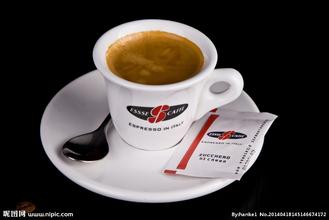Which Panamanian coffee producing areas have grown coffee Panamanian jadeite manor coffee flavor manor
Central America is a long isthmus from northern Mexico to southern Colombia, connecting North and South America. Panama is located in the southernmost part of Central America, so the country runs from east to west, not from north to south as people think. This means that the coast of the Caribbean (Atlantic) is in its north, while the Pacific is in the south.
Panama is by far the narrowest country that shares the Atlantic and Pacific coastlines. And this has a far-reaching impact on coffee production. In the coffee-producing region of Chiriqu í, the hometown of world-renowned estates such as Hacienda La Esmeralda, Elida Estate, Finca Nuguo, and Finca La Mula, the marine climate is a huge system covering the entire hemisphere only 60-70 km from the ocean. Other currents in the Caribbean originate as far away as Iceland, while some east-west currents in the Pacific Ocean originate half a world away off the coasts of Japan and Indonesia. On the island of Panama, which is less than 100 kilometers wide, these global climate systems intertwined and collided, creating amazing microclimate change. The wind swirls and changes direction; rain without warning, clouds floating on the hills with fog and ice rain Willem Boot, owners of two Panamanian farms, Finca Sox í an and Finca La Mula, are also award-winning varieties of rosy summer coffee. In February 2015, I went to Finca La Mula Manor with the professional manager of Boot, along with my friend Kelly Hartmann, a Panamanian native. In summer in Panama, the climate from January to April is much drier than when I first visited Panama. But Boot reminds me that when you get to the farm, you will find that "dry" is only relative. "this is basically a forest in the clouds, and when the clouds come, the temperature will drop sharply." This is how Boot describes it. We climbed the steep hillside of the manor and passed through the thick clouds, which covered everything that La Mula was a dense forest and huge shade trees covered most of the planting area. There is also a second layer of shade trees that grow lower than them, and under this vault are rosy summer coffee trees that have a unique flavor because of the environment.
Boot told us: "if the cloud period is regular and becomes a regular phenomenon, it shows that it can cause some unique situations for trees." Especially in the presence of fruit trees, plants will respond to the environment and adjust themselves. When there is no sunlight, the leaves get a higher water supply, and the photosynthesis of the trees is slow, which lengthens the ripening period of cherries, making the flavor stronger, especially in terms of sweetness and acidity. " So will humidity make it more difficult to grow? "it doesn't matter," Boot said. "We want these unique things to happen, and that's what makes them unique."
The thick forest ensures that the clouds can last on the hillside. Under the joint action of trees and clouds, combined with high altitude, so that coffee can grow in a cool and humid environment

Important Notice :
前街咖啡 FrontStreet Coffee has moved to new addredd:
FrontStreet Coffee Address: 315,Donghua East Road,GuangZhou
Tel:020 38364473
- Prev

Round, full-bodied Rwandan coffee bean flavor, taste, estate characteristics, introduction to Chimaier estate
Rwanda has been growing coffee since colonial times. Although coffee is the main crop, the quality of coffee produced in Rwanda is not outstanding. The status of coffee in the world is low and few people pay attention to it. Most coffee varieties grown in Rwanda are bourbon varieties. Rwanda, known as the country of thousands of hills, has a high altitude mountain environment, fertile volcanic soil and abundant rainfall, which are beneficial to coffee.
- Next

Introduction to Santa Cruz Manor with balanced acidity and taste of Ecuadorian Coffee
Flavor: balanced acidity, aromatic fragrance recommended roasting methods: medium to deep roasting, can be made into high-quality mixed coffee, suitable for multi-use evaluation: general Ecuadorian giant turtle island coffee beans from the hometown of giant turtles coffee treasures the best Ecuadorian coffee is grown on St. Cristobal Island in the Galapagos Islands, where it has the best quality coffee in the world.
Related
- Does Rose Summer choose Blue, Green or Red? Detailed explanation of Rose Summer Coffee plots and Classification in Panamanian Jade Manor
- What is the difference between the origin, producing area, processing plant, cooperative and manor of coffee beans?
- How fine does the espresso powder fit? how to grind the espresso?
- Sca coffee roasting degree color card coffee roasting degree 8 roasting color values what do you mean?
- The practice of lattes: how to make lattes at home
- Introduction to Indonesian Fine Coffee beans-- Java Coffee producing area of Indonesian Arabica Coffee
- How much will the flavor of light and medium roasted rose summer be expressed? What baking level is rose summer suitable for?
- Introduction to the characteristics of washing, sun-drying or wet-planing coffee commonly used in Mantenin, Indonesia
- Price characteristics of Arabica Coffee Bean Starbucks introduction to Manning Coffee Bean Taste producing area Variety Manor
- What is the authentic Yega flavor? What are the flavor characteristics of the really excellent Yejasuffi coffee beans?

